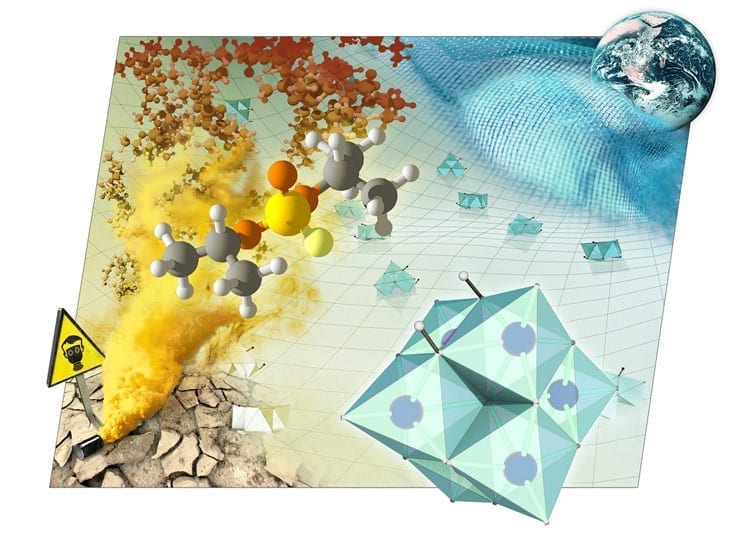Researchers at Oregon State University have discovered that some compounds called polyoxoniobates can degrade and decontaminate nerve agents such as the deadly sarin gas, and have other characteristics that may make them ideal for protective suits, masks or other clothing.
The use of polyoxoniobates for this purpose had never before been demonstrated, scientists said, and the discovery could have important implications for both military and civilian protection.
The study findings were recently published in the European Journal of Inorganic Chemistry.
Some other compounds exist that can decontaminate nerve gases, researchers said, but they are organic, unstable, degraded by sunlight and have other characteristics that make them undesirable for protective clothing – or they are inorganic, but cannot be used on fabrics or surfaces.
By contrast, the polyoxoniobates are inorganic, do not degrade in normal environmental conditions, dissolve easily and it should be able to incorporate them onto surfaces, fabrics and other material.
“This is a fundamental new understanding of what these compounds can do,” said May Nyman, an associate professor of chemistry in the OSU College of Science. “As stable, inorganic compounds they have an important potential to decontaminate and protect against these deadly nerve gases.”
As a chemical group, polyoxoniobates have been known of since the mid-1900s, Nyman said, but a detailed investigation of their complex chemistry has revealed this new potential. Besides protection against nerve gas, she said, their chemistry might allow them to function as a catalyst that could absorb carbon dioxide and find use in carbon sequestration at fossil-fuel power plants – but little has been done yet to explore that potential.
A new method to protect against nerve agents could be significant. These organofluorophosphate compounds can be inhaled or absorbed through the skin, and in military use are considered weapons of mass destruction. They can be lethal even at very small levels of exposure.
“In continued work we hope to incorporate the protective compounds onto surfaces or fabrics and explore their function,” Nyman said. “They could form the basis for an improved type of gas mask or other protection. We would also need to test the material’s ability to withstand very arid environments, extreme heat or other conditions.”
A goal will be materials that are durable, high performing and retain a high level of protection against nerve agents such as sarin and soman gas even in harsh environmental conditions, researchers said.
The OSU research demonstrated the ability of polyoxoniobates to neutralize both actual and simulated nerve agents. Testing against actual nerve agents was done at the Edgewood Chemical Biological Center, a U.S. Army facility designed for that purpose.
OSU has collaborated on this research with Sandia National Laboratories and the U.S. Army. The work at Edgewood was supported by the Defense Threat Reduction Agency, a unit of the U.S. Department of Defense.
Image: Compounds have been discovered that offer a new way to detoxify chemical weapons such as sarin gas. Credit: Oregon State University


